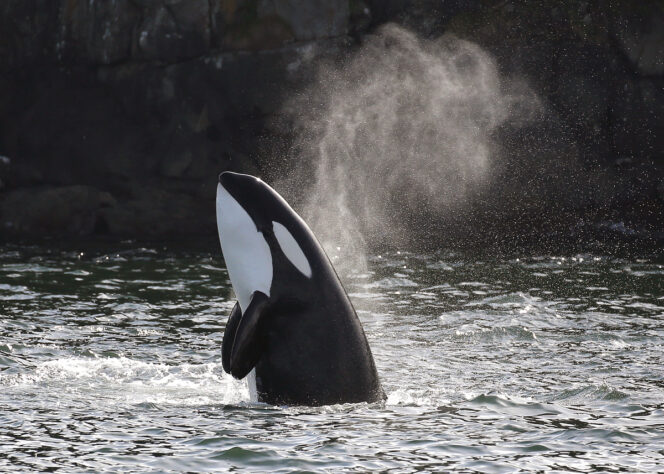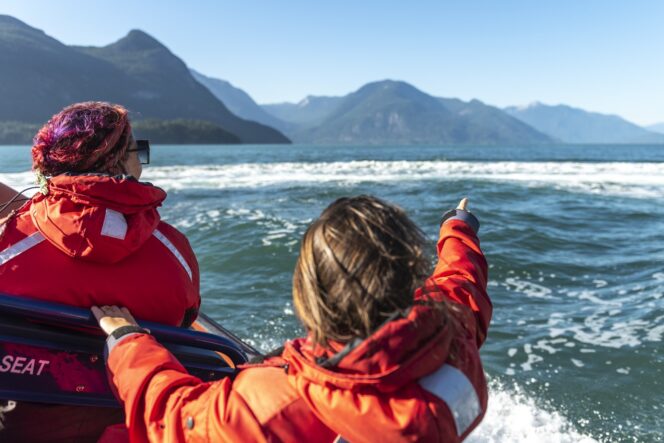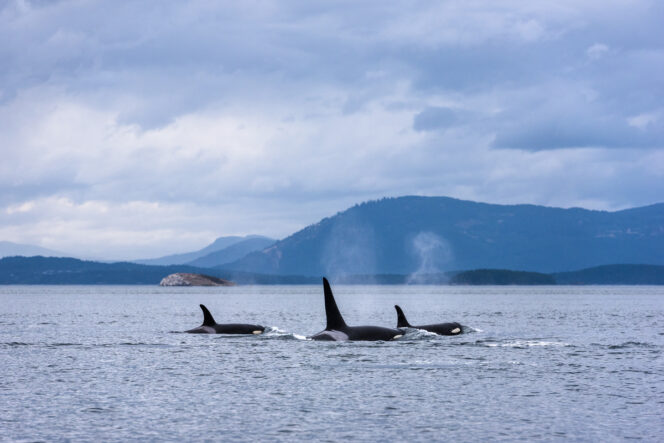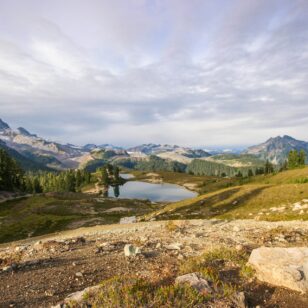
Photo: Eagle Wing Tours/Valerie Shore
Vancouver is one of the best locations in the world for whale watching. Thousands of whales migrate through the nearby waters and several pods of orcas live here year-round. As the 2021 whale watching season gets underway, here’s everything you need to know about whale watching in Vancouver.
Until further notice, in line with the public health order, non-essential travel into, within, and out of BC is not recommended. BC residents, let’s do our part by continuing to stay small and support local with your immediate household, in accordance with the latest guidelines.
When to Go
Whale watching season in Vancouver runs from March to October. Since the whales migrate unpredictably through the area following their prey, there is no “best” month or time of day to go during the season.
What You’ll See
For many people, the main reason to go whale watching in Vancouver is to see killer whales, also known as orcas. The waters of the Salish Sea off Vancouver are home to three pods of fish-eating resident orcas. Transient mammal-eating orcas also swim through the area regularly.
But killer whales aren’t the only whales you can see near Vancouver. Humpback whales, recognizable by their dark body and white belly, also migrate through the Salish Sea. They feed on krill and small fish, sometimes creating a net of bubbles to catch their prey. The best times to see humpbacks are spring when they are on their way north to Alaska and fall when they are on their way south to Mexico. But some humpbacks hang around all year.

Photo: Eagle Wing Tours/Valerie Shore
Occasionally, whale watchers in Vancouver also spot grey whales, minke whales, and Pacific white-sided dolphins. These species mostly stick to the open ocean, but sometimes venture into the more protected waters near Vancouver.
You can also spot many other marine mammals on whale watching tours. Harbour seals, sea lions, river otters, and porpoises are common. It’s also easy to see birds on whale watching tours. Look for great blue herons, bald eagles, cormorants, surf scoters, ducks, and more.
What Kind of Boat Should You Choose
Local whale watching companies use a variety of boat types.
Small inflatable Zodiac boats give you an exciting, fast, and sometimes splashy ride. They also have the smallest group size. Since you sit close to the waterline, you’ll get a more intimate view of the wildlife. But they don’t have indoor cabins or washrooms.
Vancouver tour operators use many different types of larger boats that can hold as few as 8 and as many as 200 people. These boats usually have a mix of indoor and outdoor viewing areas and have washrooms. They provide a more stable and comfortable ride but aren’t as fast as the zodiacs so they may not be able to get to as many viewing locations.

Photo: Kate Milford
What Should You Bring
Bring warm layers as it can get chilly on the water. Wear a rain jacket or windbreaker. If you don’t have warm layers or a rain jacket, contact your tour company as they may have spares to loan out. On bright days, bring sunglasses, a hat, and sunscreen.
Don’t forget your camera to capture this amazing experience. If you’re riding on an open boat, bring a waterproof dry bag to protect it, or ask your tour operator if they have one to lend. Binoculars are also a great idea, although some tours will have some you can borrow.
Most tours include light snacks and water. But since tours are often up to 5 hours, you may want to pack a lunch.

Photo: Destination BC/Reuben Krabbe
Where to Go
All Vancouver-area whale watching companies head out into the Salish Sea and Georgia Strait to look for whales and other wildlife. They also venture into the Gulf Islands and Washington State’s San Juan Islands, as well as into the Juan de Fuca Strait.
Tour operators use radios to communicate with each other and with spotters to help find the best wildlife sighting locations each day. Each day on the water is different since the wildlife go where they please.
If you want to launch from Vancouver, head to Wild Whales Vancouver or Prince of Whales on Granville Island. You can also start your tour from Richmond’s Steveston neighbourhood with Vancouver Whale Watch or Steveston Seabreeze Adventures.
Once travel restrictions ease, a whale watching trip to Victoria is tons of fun. Eagle Wing Whale & Wildlife Tours, Orca Spirit Adventures, and Prince of Whales all offer tours from Victoria. All three companies also offer packages that include whale watching in Victoria and seaplane flights to and from Vancouver.

















One Response to It’s Whale Watching Season in Vancouver – Everything You Need to Know